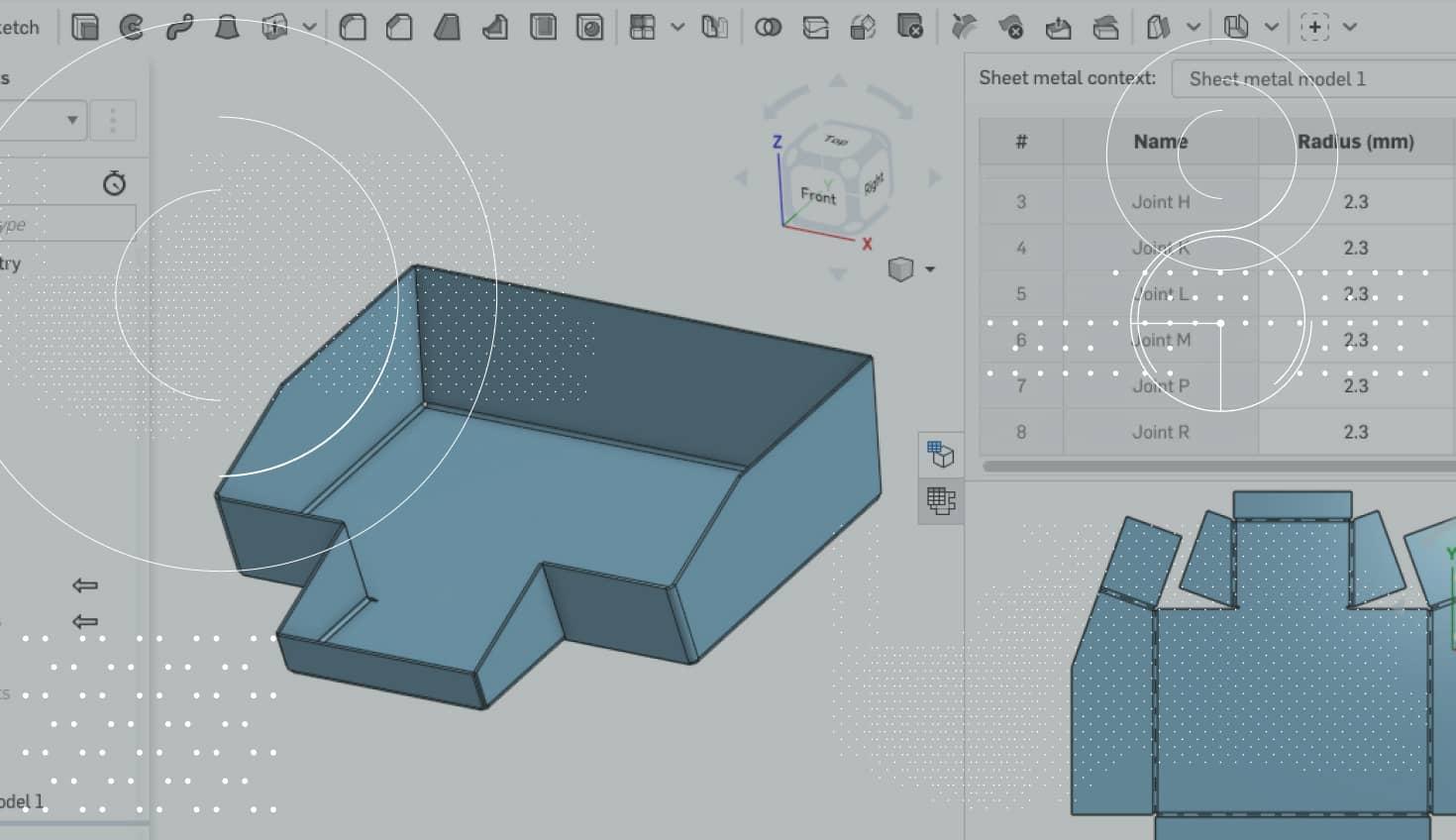
2:14
Today's Tech Tip focuses on surface modeling techniques that can be used when creating sheet metal parts.
Onshape’s sheet metal tools are vast and can produce complex features with ease. This versatility ranges from sketching in the flat pattern for cutting operations, to adding a tab to an existing part with a 2D sketch.
The housing example below needs an additional part added as a guard, and must match both tabs. No matter what type of model is being constructed, the ultimate goal is to have the least number of features while maintaining accuracy and fast regeneration times. There are several workflows for creating sheet metal within Onshape, but what workflow best suits the application? One technique that users may not be aware of is the ability to use surfaces to create sheet metal parts. Let’s take a look.
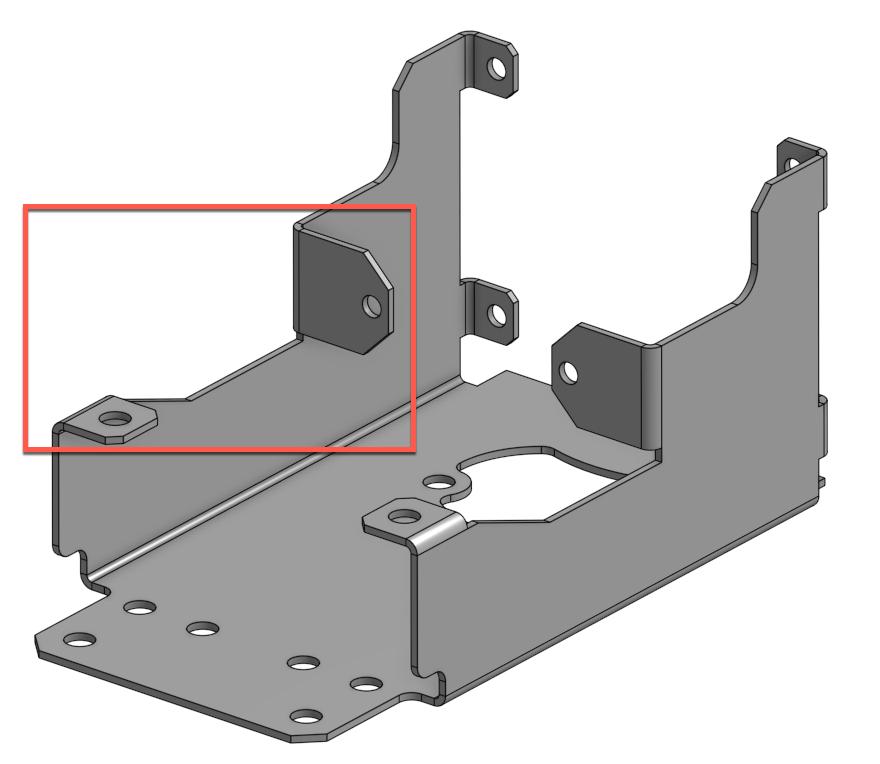
A typical workflow would require several sketches, flanges, and extruded cuts to construct the part.
11 Features:
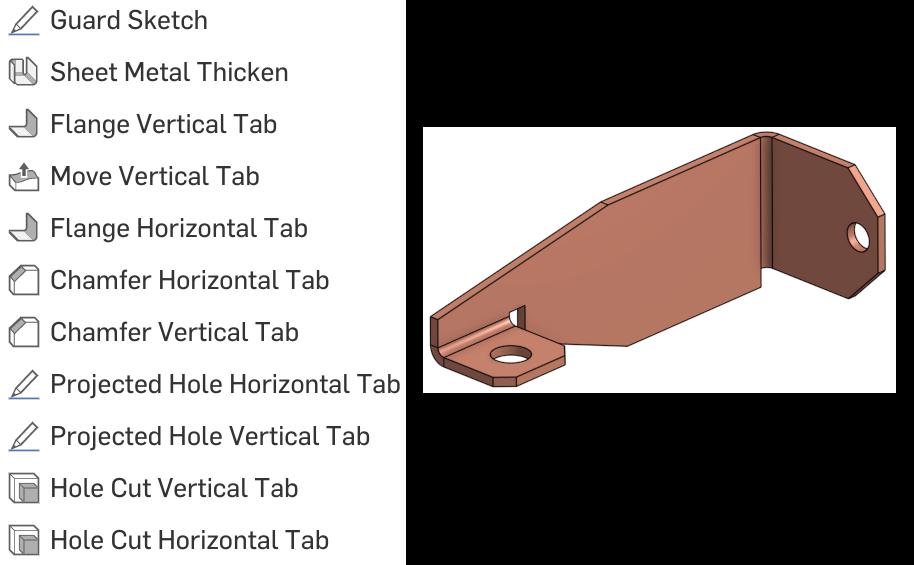
So how can we construct this part using fewer features? One approach is to use existing geometry and surfaces to dramatically reduce the number of features in the Feature List. Let’s see how it's done.
5 Features:
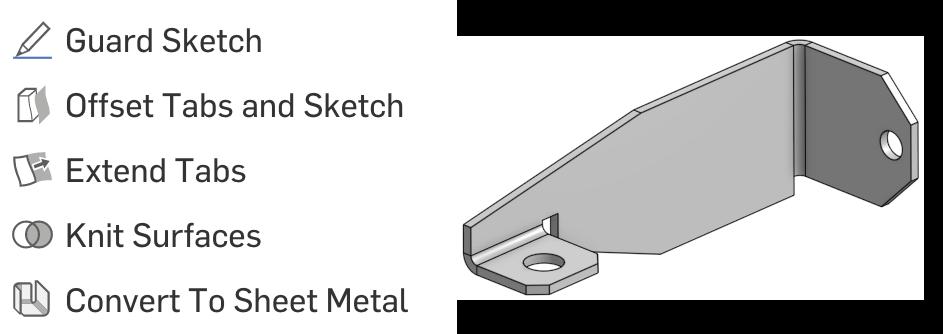
First, a sketch is drawn on the left face of the sheet metal housing and will represent the side of the guard. Several edges of the housing are projected onto the sketch plane with the “Use” sketch command.
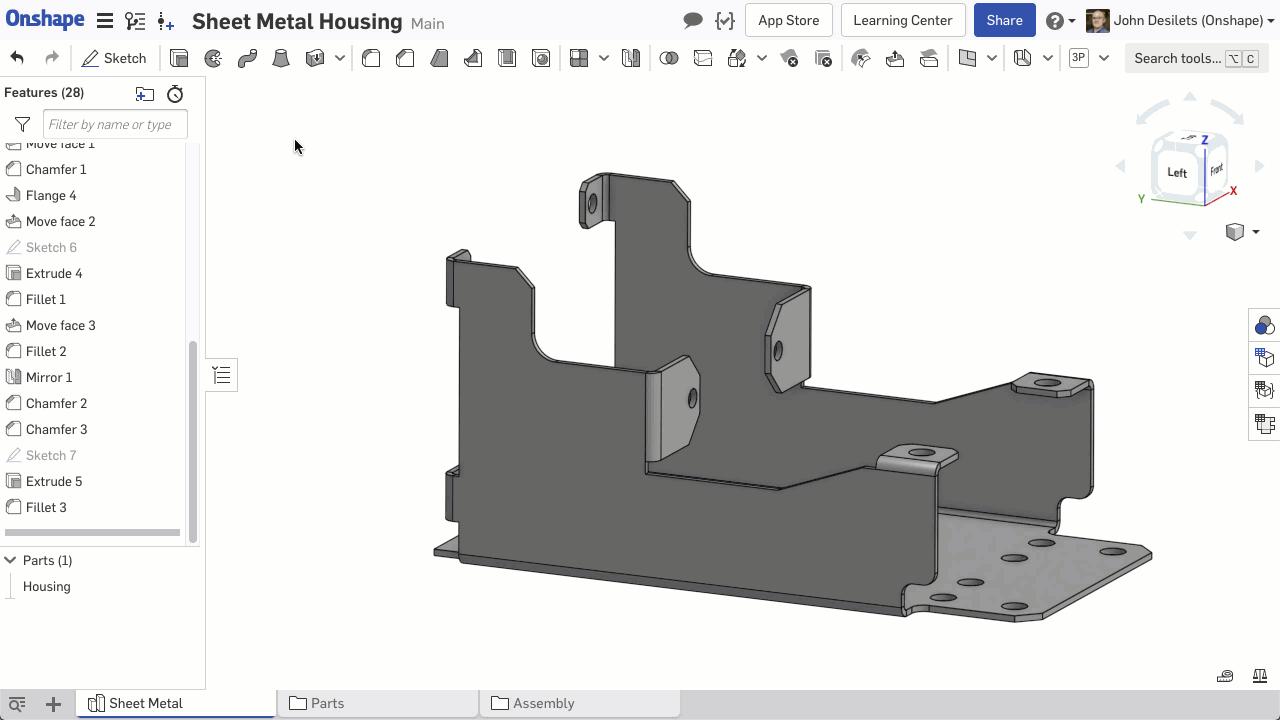
The Offset Surface feature, with an offset value of zero, is used to offset the face of each tab and the closed sketched profile. This creates three surfaces that will be converted into the sheet metal part.
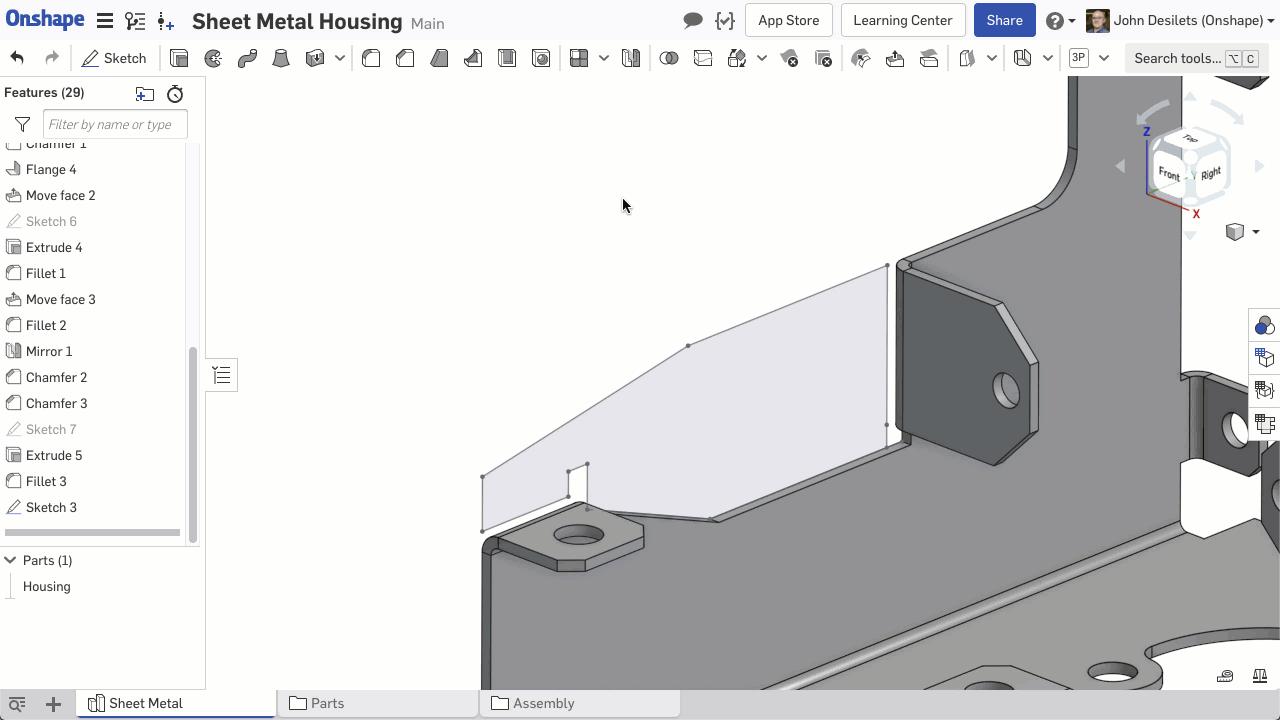
The surfaces representing the tabs must connect to the center surface to form coincident edges. The Move Boundary feature is used to extend the edges of the tabs to the center surface. Once all edges are connected, the Boolean tool can be used to knit all three surfaces into a single surface.
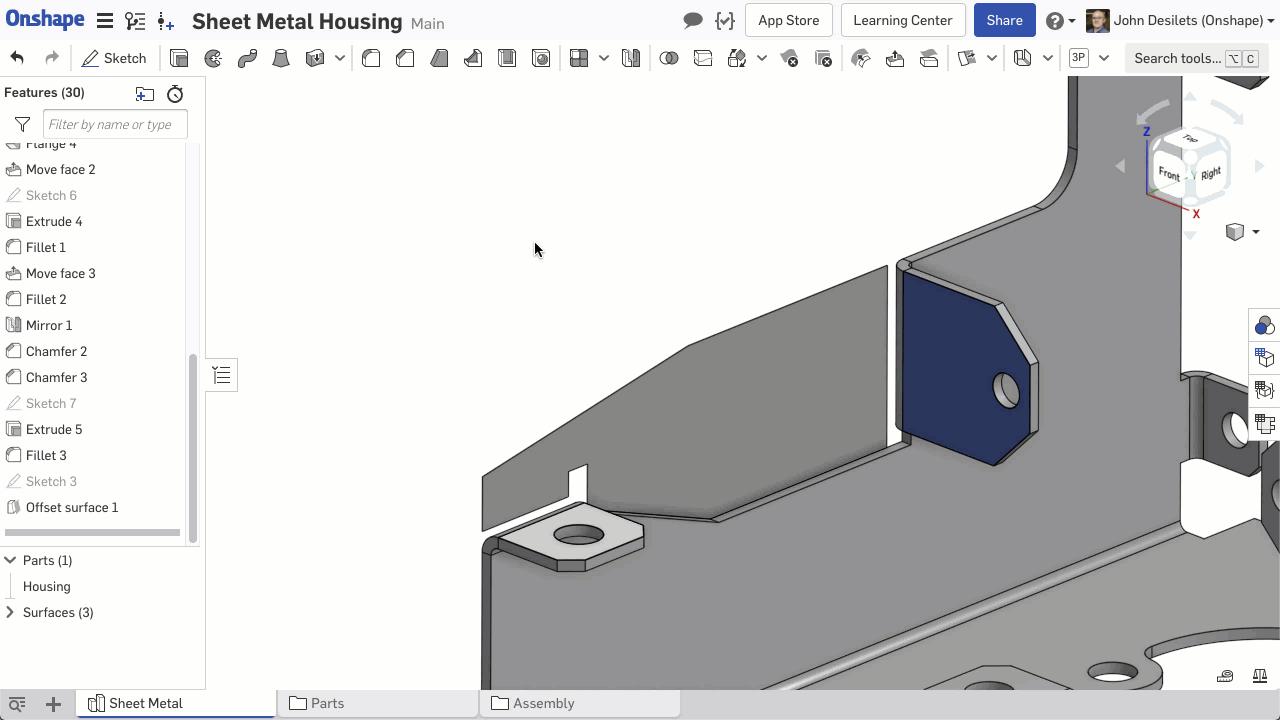
Last, the Sheet Metal feature, with the option to convert, is used to convert the surface into a sheet metal part. Once the feature is accepted, a new sheet metal part is created and is listed in the parts list.

The end result is a finished sheet metal part that requires only five features to make. Try it yourself. Using surfaces with sheet metal can help reduce the number of features in the Feature List and can change the way you look at modeling sheet metal forever.
For more information, here are some additional resources:
Onshape Sheet Metal Help Documentation
Onshape Learning Center Sheet Metal
Interested in learning more Onshape Tech Tips? You can review the most recent technical blogs here.
Latest Content

- Blog
- Becoming an Expert
- Assemblies
- Simulation
Mastering Kinematics: A Deeper Dive into Onshape Assemblies, Mates, and Simulation
12.11.2025 learn more
- Blog
- Evaluating Onshape
- Learning Center
AI in CAD: How Onshape Makes Intelligence Part of Your Daily Workflow
12.10.2025 learn more
- Blog
- Evaluating Onshape
- Assemblies
- Drawings
- Features
- Parts
- Sketches
- Branching & Merging
- Release Management
- Documents
- Collaboration
Onshape Explained: 17 Features That Define Cloud-Native CAD
12.05.2025 learn more



